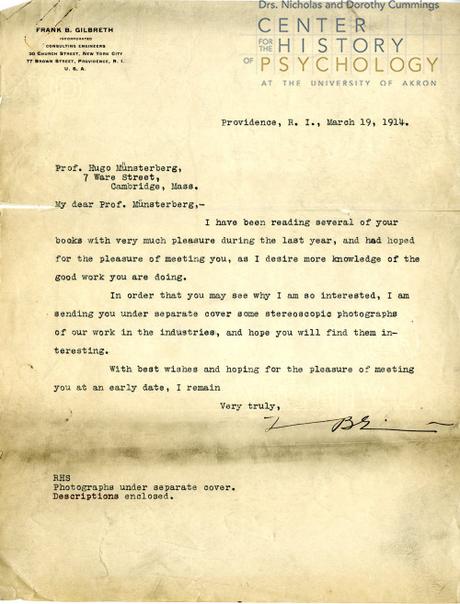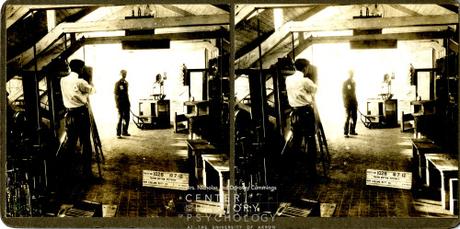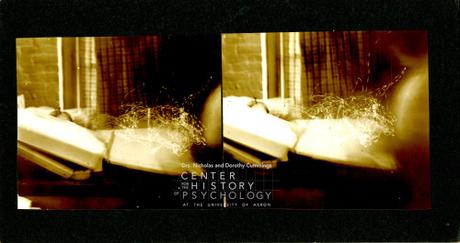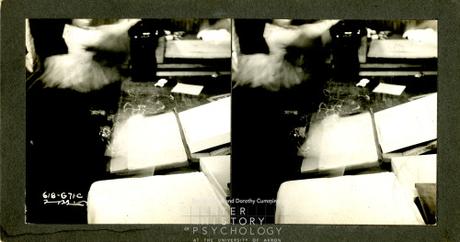contributed by Nicole Merzweiler.
The CCHP recently received an interesting new collection that I would like to share! It is the Frank B. Gilbreth Collection of Stereoscopic Photographs. If you have read, or watched the original movie version of Cheaper by the Dozen, then you may recognize the name Frank B. Gilbreth. The book, written by Frank B. Gilbreth, Jr. and his sister Ernestine Gilbreth Carey, describes life with their parents, who were known as efficiency experts. Gilbreth Sr. and Lillian were business partners who studied efficiency and output in industrial work places. Frank, an engineer, and Lillian, who had her Ph.D. in psychology, used time-and-motion studies to streamline employee movements and increase comfort and productivity.
The set of stereoscopic photographs includes a letter dated March 19, 1914, from Frank Gilbreth to Hugo Münsterberg. The letter provides detailed descriptions for the photographs.

Gilbreth wanted to show Münsterberg, a pioneer of applied psychology who also had interest in industrial/organizational work, the projects that he had been working on and sent photographs which were mainly from his time at The New England Butt Company in Providence, Rhode Island.
You’ll notice something unique about these photographs – there are two side-by-side images. Stereoscopic photographs are used to create depth in the picture. If you look at these through a stereoscopic viewer they will become three-dimensional. The collection consists of 54 stereoscopic photographs, including 13 on 8 x 9.25 inch cards, 24 on 3.5 x 7 inch cards, and 17 photographs without card backing in a variety of sizes. All of the photographs in this collection have been digitized and are available to view online.
Some of my favorite from the collection include:

According to the letter, “1026 shows the experiment room where my micro-motion study first took place. The floor is cross-sectioned, and the two clocks can be seen half way up on the right hand side of the picture.”

According to the letter, “618-G70-2. This picture shows ten cycles of folding ten handkerchiefs, taken from the right side in put in a box in front”.

According to the letter, “#618-G71-C shows an operator making more than 150 motions in folding one of these pieces of cloth. The operator should do this work in 16 motions.”
![Psychology in 3D: A Collection of Stereoscopic Photographs According to the letter, “S10-B. This is a cyclegraph of a surgeon tieing [sic] a knot in a suture around an artery. This is also a dummy operation.”](http://m5.paperblog.com/i/133/1338689/psychology-in-3d-a-collection-of-stereoscopic-L-L5iQC0.jpeg)
According to the letter, “S10-B. This is a cyclegraph of a surgeon tieing [sic] a knot in a suture around an artery. This is also a dummy operation.”
